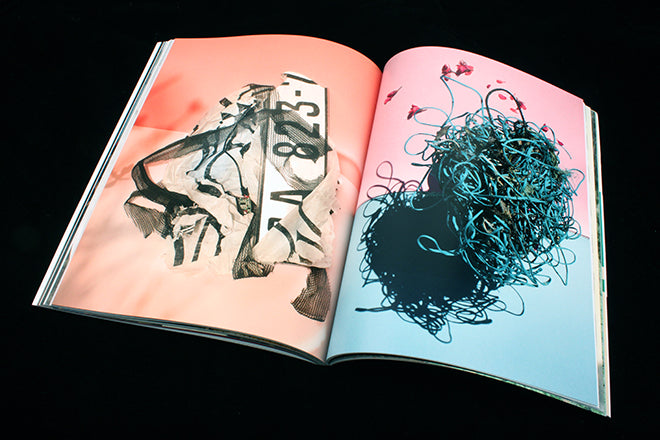
Aperture #234, Earth
You might have noticed us writing recently about a rising swell of magazines paying attention to environmental issues. US photography title Aperture wades into the current with a hot pink cover, ‘Looking toward the Valley of the Gods’ by David Benjamin Sherry, introducing their Earth issue in an otherworldy way.
The issue’s cover (top) immediately offers, as Bill McKibben writes, ‘a “queer revision” of the rugged and macho legacy’ of the Wild West. Exemplifying the fact that Aperture is a ‘photography and ideas’ magazine, and contains immaculately-written essays alongside all its features, McKibben centres his writing around the catastrophe that, having finally gained protected status, the lands held sacred by Native Americans are being once again carved up ‘to make possible oil extraction and mining’, by Donald Trump.
Aperture magazine began in 1952, established as part of a foundation by a cohort of now-legendary photographers including Dorothea Lange and Ansel Adams, to establish ‘common ground for the advancement of photography’. It shows its American roots by forefronting those iconic landscapes — indeed photographs of areas ravaged by the 2018 California wildfires were commissioned by the magazine for this issue, and it’s never not shocking to see hills blackened except for a lonely dirt path meandering through (above).
The bleak destruction contrasts with the more portrait-oriented photography looking at communities and rural practices throughout India by Vasantha Yogananthan, (above) and there are plenty of pieces in the magazine that are less western-centric.
We were tickled to turn to the photograph of a vandalised Fiat billboard in 1979 by Jill Posener (above). Laura Guy writes about the ‘delinquent typography of feminist tags’ and the caustic wit of one-liners exemplified by this very British scene.
The first issue of Aperture I remember is their ‘On Feminism’ issue from Winter 2016. It was a revelation — the bold cover with Claude Cahun on the front, in-depth writing and subversive images inside, effortlessly mixing coated and uncoated paper, either giving the photos a haptic depth or colour-popping sheen. In the new issue there’s a piece on ecofeminist world-building (above), showing that feminist ways of seeing aren’t just relegated to a token issue, but a serious line of enquiry.
The Anthropocene, the idea that humans have visibly impacted global ecosystems since the Industrial Revolution, is a central theme in the new issue. When photographer Thirza Schapp walks on the beach near her Cape Town home, she collects pieces from the ‘perpetual mass of plastic debris’ that washes up, and creates sculptures from them (above). She photographs these against pastel hued backdrops in her garden – you can see the dappling of the natural light – which for me is what distinguishes this as exemplary photography rather than it being a question of documenting a sculpture.
Aperture seems to constantly be asking the question: if we’re all photographers now (considering the ubiquity of cameraphones), how do you distinguish photographs that have artistic merit? This is it – this simple idea that creates punch-in-the-gut photographic art, alongside photojournalism that wouldn’t feel out of place in National Geographic.
Editor: Michael Famighetti
Art Direction, design & typefaces: A2/SW/HK, London
Buy your copy from the magCulture Shop:







